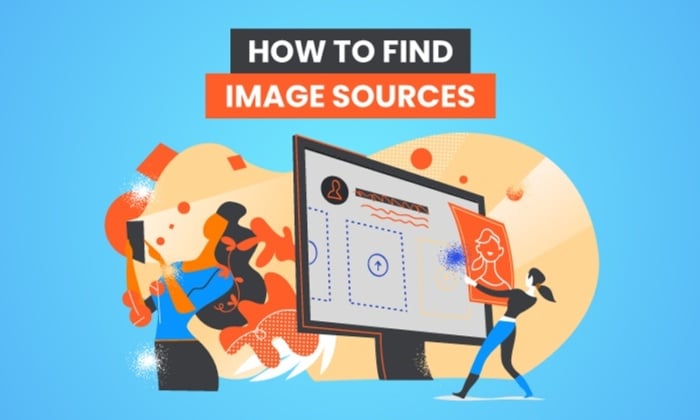In today’s digital world, images are everywhere — on social media, blogs, e-commerce sites, and even email campaigns. Often, you come across an image that captures your attention, and you wonder: Where did it come from? Finding the original source of an image is crucial for many reasons, whether you are a student citing a reference, a photographer protecting your work, a small business owner sourcing content, or a social media user ensuring authenticity. Thankfully, with the right tools and techniques, it is easier than ever to find the source of an image online quickly and accurately.
In this article, we will explore the best tools, methods, and tips to track down images, along with some common mistakes to avoid. By the end, you’ll have a complete guide to sourcing images responsibly and efficiently.
Why Finding the Source of an Image is Important

Table of Contents
Knowing how to find the source of an image is more than just satisfying curiosity. It has practical implications:
- Copyright Compliance: Using images without proper permission can lead to legal consequences. By locating the source, you can verify licensing and usage rights before including the image in your projects.
- Authenticity Verification: In the age of fake news and altered visuals, confirming the origin of an image ensures the content you share or publish is trustworthy.
- Content Marketing & SEO Benefits: Credible and properly sourced images improve your website’s reliability, boosting SEO rankings and audience trust.
- Academic and Research Accuracy: Students and professionals often need the original source of images for accurate citations and research documentation.
Finding an image’s source is a vital step for anyone who works with digital content regularly.
Top Tools to Find the Source of an Image
Several tools make it straightforward to find the source of an image online free. Let’s examine the most reliable options.
Google Images Search
Google Images is one of the simplest and most widely used methods for reverse image searching. You can upload an image or paste its URL to find websites where it appears.
How to Use Google Images:
- Visit Google Images.
- Click the camera icon in the search bar.
- Upload your image or paste its URL.
- Review the results showing similar or identical images and their web pages.
Why It Works Well:
- Fast and easy to use
- Shows visually similar images
- Links to original sources when available
Limitations:
- May not find images on private or restricted websites
- Heavily edited or low-resolution images may return fewer results
Google Lens
Google Lens is a more advanced tool that not only identifies images but also provides information about objects, text, and locations in photos.
How to Use Google Lens:
- On mobile: Open Google Photos or the Google app, tap the Lens icon, and point it at the image.
- On desktop: In Google Chrome, right-click an image and select “Search image with Google Lens.”
Best Use Cases:
- Identifying products, plants, landmarks, or text
- Discovering visually similar images online
- Translating text from images
Google Lens is particularly valuable for students, photographers, and social media enthusiasts who need quick, detailed recognition.
TinEye
TinEye is a dedicated reverse image search engine known for its precision. Unlike Google Images, TinEye focuses on finding exact matches.
Key Features:
- Upload images or paste URLs to find all online instances
- Sort results by oldest or newest appearances
- Provides high accuracy for professional and commercial purposes
Why Professionals Use TinEye:
- Helps photographers and marketers track image usage
- Identifies unauthorized use of digital content
- Complements Google Images for a more comprehensive search
Free Apps for Finding Image Sources
For mobile users, there are several apps designed to find the source of an image app-based:
- Veracity (iOS): Allows you to upload images from your device to locate their origin.
- Reversee (iOS/Android): Integrates with Google Images for reverse image searching.
- Search By Image (Android): Lets you upload images to multiple search engines at once.
These apps are excellent for students, photographers, and marketers who need fast, on-the-go solutions.
Tips for Effective Image Source Searching
To maximize your chances of successfully finding an image’s origin, follow these expert tips:
- Use Multiple Tools: Don’t rely on just one search engine. Combining Google Images, TinEye, and mobile apps increases accuracy.
- Crop or Edit Images: Removing watermarks or background clutter can improve search results.
- Check Image Metadata: File properties like EXIF data often reveal the creator, date, or location of an image.
- Combine Keywords: Pair the image with related text searches for better results.
Following these strategies will improve your ability to locate original sources quickly and reliably.
Common Mistakes to Avoid
Even experienced users sometimes make errors when searching for images. Avoid these pitfalls:
- Relying on a Single Tool: Different tools have unique strengths; using multiple sources gives better results.
- Ignoring Copyright Laws: Just because an image appears online doesn’t mean it’s free to use. Always check licensing.
- Overlooking Simple Edits: Small modifications to an image, like flipping or resizing, can affect reverse search results.
Being aware of these common mistakes will save time and ensure responsible image usage.
Frequently Asked Questions (FAQ)
Q1: How do I find the source of an image online free?
A: Use tools like Google Images, Google Lens, TinEye, or mobile apps such as Veracity and Search By Image. These are all free and highly effective.
Q2: Can I find copyrighted images using reverse search?
A: Yes. Reverse image searches can help you identify copyrighted material, allowing you to check its source and usage rights.
Q3: Which tool is best for professional photographers?
A: TinEye is often preferred because it provides precise results and allows sorting by oldest or newest appearances, helping track unauthorized use.
Q4: How accurate is Google Lens for reverse image search?
A: Google Lens is highly accurate for object recognition, text identification, and finding visually similar images. However, exact matches may vary depending on image quality.
Conclusion
Finding the source of an image is no longer a challenge. Whether for legal compliance, content marketing, academic research, or personal curiosity, tools like Google Images, Google Lens, TinEye, and free mobile apps make it easy to trace the origin of any image. By combining multiple tools and applying smart search strategies, you can confidently locate original images, protect your work, and enhance the credibility of your digital content.
Take advantage of these tools today and ensure that every image you use or share is sourced responsibly. Knowing the origin of an image isn’t just practical — it’s essential in the modern digital world.

